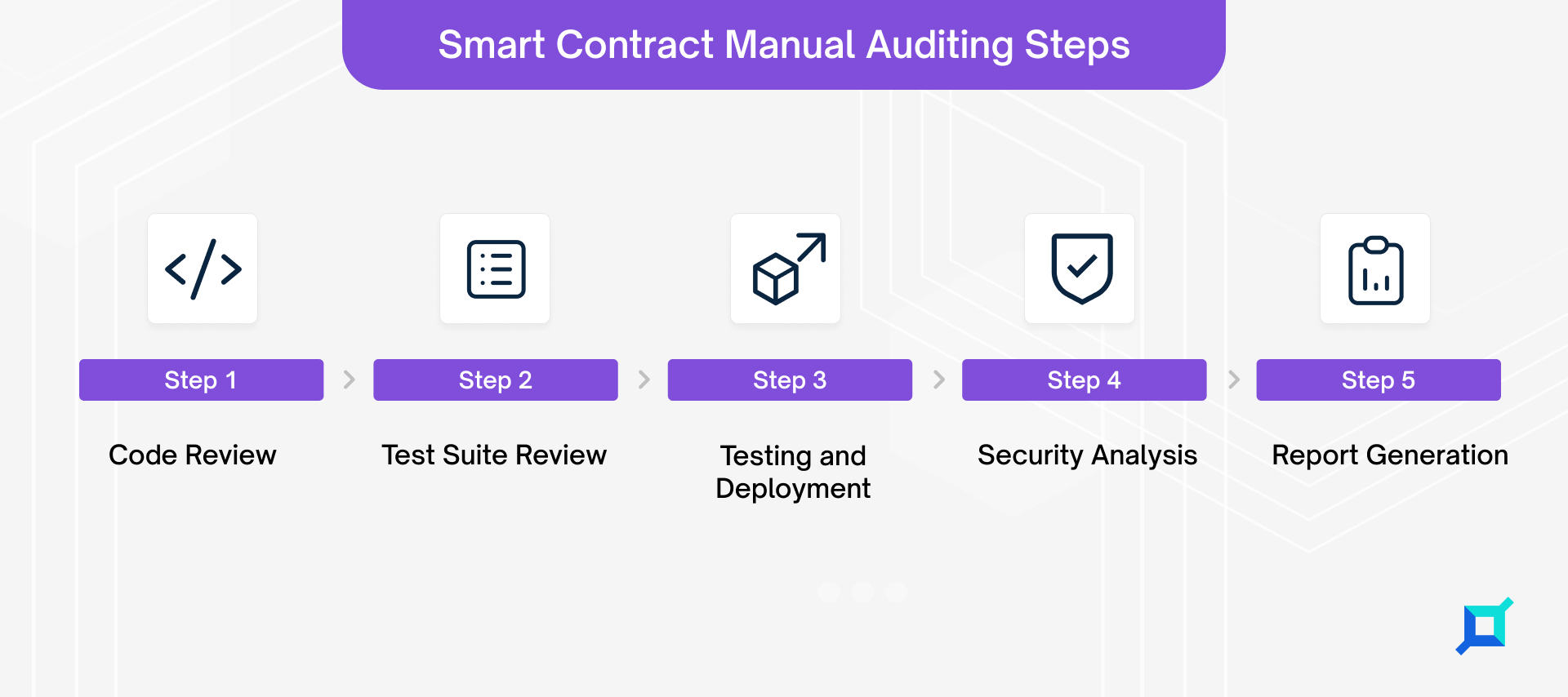Blockchain is a secure, reliable, immutable network that provides its users with a lot of trusts despite being trustless. This trust comes in through various conditions that are put over a blockchain in a tamper-proof, decentralized platform in the form of smart contracts. These smart contracts are self-executing computer programs that automatically execute the terms of an agreement when certain conditions are met. These conditions are the terms of an agreement between the two participating parties written in the form of code in the smart contract. For example, contracts for releasing finances when certain preset conditions are met or managing supply chain logistics, voting, etc.
As smart contracts are codes deployed on the blockchain, it becomes necessary to check them thoroughly before deploying them over the blockchain. Once deployed, they become immutable, which means any vulnerability left unchecked in the smart contract might compromise the security & reliability of the whole system. This thorough checking of vulnerabilities is done through auditing.
The DAO Hack
The DAO hack is a famous example to understand the extent of loss one might have to bear if smart contracts are not audited properly. In 2016, a vulnerability in the smart contract deployed by DAO was found by a hacker. The vulnerability resulted from a combination of factors, including a lack of proper error handling and insufficient testing. Specifically, it allowed an attacker to repeatedly withdraw the same funds multiple times before the funds were properly transferred and recorded on the blockchain allowing the malicious attacker to drain approximately 3.6 million ETH (worth around $50 million at that time) from the organization’s funds.
This vulnerability was due to a programming error in the smart contract code, which allowed the attacker to take advantage of a race condition and execute the malicious code before the smart contract had a chance to update its internal state.
It’s worth noting that this vulnerability was not widely understood or anticipated at the time, and it took the Ethereum community by surprise, resulting in a hard fork of Ethereum and dividing the Ethereum blockchain into Ethereum Classic (ETC) and Ethereum (ETH). Thus, the DAO hack serves as a cautionary tale & a reminder of the importance of thoroughly auditing and testing smart contract code before deploying it on the blockchain.
Steps For Auditing Smart Contract
Auditing helps ensure that the smart contract is functioning as intended and meets the users’ requirements. The auditing process involves thoroughly examining the code, its logic, and the underlying business requirements. It helps identify potential issues or areas for improvement and ensures that the smart contract will function as expected.
This auditing follows a two-step approach: the first is to conduct an audit using automated tools, and the second is to get smart contracts audited manually through a certified auditor.
Automated Audit
Automated audits are done with the help of automated tools (free or paid) available online. Some of the freely available tools that can be used to perform automated audits are as follows –
1. Mythril
It is an open-source security analysis tool that uses concolic analysis, taint analysis, & control flow checking to detect various security vulnerabilities in Ethereum smart contracts. To use Mythril, install the tool on the computer & run the following command in the terminal to analyze a smart contract:
myth analyze <contract-file>
For example, if a smart contract is saved in a file named MyContract.sol, then run the following command:
myth analyze MyContract.sol
Mythril will then analyze the code and produce a report that lists any potential vulnerabilities it identified. More details on Mythril can be found at https://mythril-classic.readthedocs.io/
2. Remix
It is a web-based Integrated Development Environment (IDE) for writing, testing, and deploying smart contracts. To audit smart contracts in Remix, activate the MythX plugin and sign in. After signing in, compile the code in the Remix editor and click the “Analysis” button. It will analyze code & produce a report that lists any potential vulnerabilities identified & suggestions for fixing them.
3. Solhint
It is a linter for Solidity, the programming language used to write smart contracts on the Ethereum blockchain. To use Solhint, install the tool on the computer. Thereafter, run the following command in the terminal to analyze a smart contract:
solhint <contract-file>
For example, if a smart contract is saved with a file named MyContract.sol, run the following command:
solhint MyContract.sol
Solhint will then analyze the code and produce a report of identified issues, such as potential security risks, coding style violations, and missing documentation.
These are just a few examples of how some of the free smart contract auditing tools can be used. However, these tools can be useful in identifying potential security risks and vulnerabilities in smart contracts. But these tools should not be used alone for auditing. A thorough security audit should also include manual auditing.
Manual Audit
Following are some steps that are taken to conduct a manual audit on smart contracts to ensure the security & functionality of the code –

1. Code Review
The first step in auditing a smart contract is thoroughly reviewing the code. The auditor examines the code line by line, looking for any potential vulnerabilities or security risks. They also check that the code adheres to best practices and industry standards. It includes checking for common security pitfalls such as reentrancy, overflow/underflow, and integer rounding errors.
2. Test Suite Review
The auditor also reviews the test suite to ensure it covers all possible scenarios and edge cases. They verify that the test suite is comprehensive and includes tests for potential security risks.
3. Testing and Deployment
The auditor deploys the smart contract on a test network & runs a series of tests to check vulnerabilities or security risks. They also check that the smart contract functions as expected and meets the requirements outlined in the code. It may involve using automated tools, such as fuzz testers, to stress-test the code and identify any weaknesses.
4. Security Analysis
The auditor performs a smart contract security analysis to identify potential risks, such as exploits, unauthorized access, or data leaks. It may involve running security scans and penetration testing to identify potential vulnerabilities.
5. Report Generation
The auditor generates a report summarizing their findings and recommendations after the audit. This report provides a clear picture of the security & functionality of the smart contract and outlines necessary modifications or fixes issues.
After following all the steps above, one needs to remember that auditing is an ongoing process, as the code and the underlying blockchain technology keep evolving. Thus, regular security reviews and updates become necessary to maintain the security & functionality of the smart contract.
Ending Note
Auditing smart contracts is a critical step in ensuring the security and functionality of decentralized applications. A comprehensive audit can help to identify potential vulnerabilities & security risks and help to ensure the successful deployment and operation of the smart contract on the blockchain.
As a result, it is critical to identify & address any potential security vulnerabilities or bugs before deployment, as they cannot be fixed afterward. Additionally, auditing helps to increase the overall trust and confidence in the smart contract and the platform it operates on. It provides assurance to users that the contract is secure and meets the necessary standards for quality and reliability. So, if you are looking forward to auditing your smart contracts, get in touch with a reliable Blockchain development company (Infrablok). It will help you perform smart contract auditing in a secure and efficient manner.
